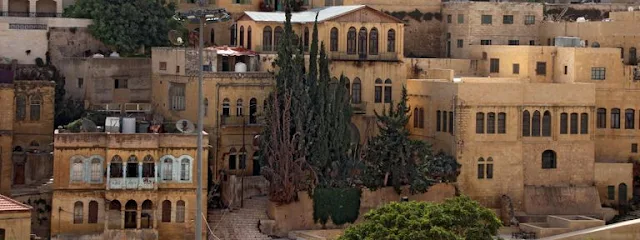The World Heritage Committee of the United Nations Educational, Scientific and Cultural Organization "UNESCO" decided to approve the inclusion of the Jordanian city of Salt on the World Heritage List.
This came during its forty-fourth session, held in China.
The Jordan News Agency (Petra) quoted the Jordanian Minister of Tourism and Antiquities, Nayef Al-Fayez, as saying, during his participation in the committee’s meetings virtually, on Tuesday:
The city of Salt is "among the kingdom's top priorities for its importance in demonstrating the characteristics of tolerance, coexistence and social welfare among its residents."
He added that social solidarity between families in the city of Salt and its visitors, and the absence of separate neighborhoods on a religious basis, is one of the clear features of the city, stressing that inclusion of Salt on the World Heritage List "will support a culture of heritage, tolerance and interfaith harmony."
Al-Fayez continued by saying, "Jordan and the World Heritage Committee today send an important message to the whole world, a message of peace, tolerance, and coexistence," noting that "the outstanding architecture of the city of Salt shows the cultural exchanges that resulted in a unique blend of high-level architectural styles."
The minister pointed out that Al-Salt's candidacy file was submitted for the first time in 1995, then later in 2017, and finally in 2021, which indicates Jordan's commitment to protecting and sustaining the outstanding global value and characteristics of the city of Al-Salt.
Minister Al-Fayez expressed his thanks and appreciation to the World Heritage Committee, the staff of the World Heritage Center, the advisory bodies, and the International World Heritage Council (ICOMOS), for their support and advice throughout the nomination process for the city's file.
Acting Director of the General Department of Antiquities, Hisham Al-Abadi, said that the inclusion of the city of Salt on the World Heritage List comes as a result of "the great cooperation and tireless efforts and teamwork between the ministry and other stakeholders."
Al-Abadi stressed that the inclusion of 6 Jordanian archaeological sites on the World Heritage List "enhances the Kingdom's position on the world tourism map," noting that the department seeks in the coming period to nominate some other archaeological sites and submit their files to the committee.
For her part, Engineer Lina Abu Salim, Director of the Management Unit of the Old City of Salt and a member of the work team preparing the file of Salt's nomination on the World Heritage List said that the file of Salt's nomination for inclusion on the World Heritage List was prepared by a local work team under the supervision of the Royal Committee for the Development of downtown Salt.
She added that the artistic vision of the file was based on the distinguished architectural heritage of the city of Salt, in addition to presenting the city as a model of coexistence and brotherhood and showing it to the world as an exceptional global value in how to respect and accept the other.
It is noteworthy that the sites inscribed on the World Heritage List in Jordan are Petra, Qusayr Amra, Umm al-Rasas, Wadi Rum, and al-Maghas, in addition to the newly listed city of Salt.




